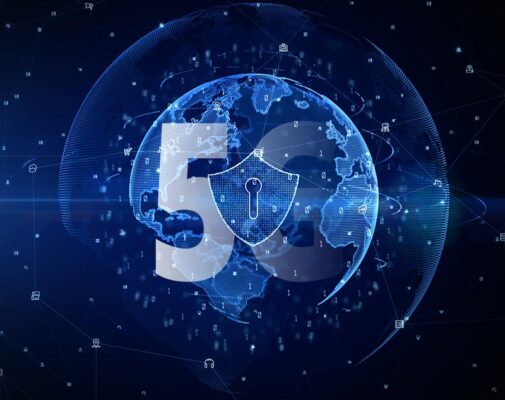How Secure 5G Networks Mitigate IoT Cybersecurity Challenges
By Enrico Milanese
May 16, 2024
By Enrico Milanese
May 16, 2024

Better IoT cybersecurity begins with smarter network solutions. For enterprises looking to expand their networking capabilities, leveraging cellular 5G technology for a secure, ultrahigh-speed wireless connection is just the beginning. Cellular technology is evolving daily to meet demanding business and industry requirements.
According to Statista and Transforma Insights, there will be 29.4 billion Internet of Things (IoT) devices worldwide by 2030. When selecting an architectural framework, it is crucial to prioritize cyberthreat and security breach prevention. This is especially important because of the rapid growth of connected devices.
In response, businesses are upgrading and integrating their wired networks with secure mobile solutions. What security challenges should they expect to face in the coming years? How will new high-speed improvements and technologies boost performance and bridge a secure connection between wired and wireless components in a business network?
A: The ongoing expansion in the number of IoT devices can open business opportunities in new and unexplored areas. Enterprises will rely heavily on IoT capabilities in their existing framework for large-scale solution deployments.
Industries that benefit from mobile communications include:

Fleet managers and transportation specialists can create more efficient, cost-effective operations with capabilities that include:
IoT-enabled smart cities need sensors, best security practices and data collection processes to improve operations for safe, eco-friendly urban spaces.
Improving energy efficiency and delivery requires using sustainable, renewable energy sources and IoT energy management solutions and devices.
Electric vehicle (EV) adoption depends on resilient charging infrastructure. Cellular modules, data plans and ODM services ensure a secure connection to central management systems.
Smart security systems can use 5G for seamless connectivity and improved data bandwidth, ensuring more effective monitoring and control.
Connected health care solutions use improved connectivity, remote monitoring and efficient medical asset tracking to achieve better patient outcomes.
5G technology revolutionizes retail by enabling real-time inventory tracking. It can also help to enhance customer engagement through interactive digital signage and smart vending machines.
Smart farming benefits from 5G connectivity with advanced remote sensing and smart irrigation systems. IoT solutions support sustainable and efficient farming practices.
Imagine obtaining actionable data about your fleet’s or livestock’s health or optimizing gas, electricity and water usage across your company’s sites. IoT offers businesses, consumers and even first responders real-time data and control with a button press. These vital services will impact the world around us.
An IoT cybersecurity strategy is paramount to success as we move into the 5G world.

A: The virtualized core of 5G networks introduces unique vulnerabilities. These networks are at risk of data leakage and cross-contamination. In addition, while efficient, automation can inadvertently lead to the rapid spread of problems like malware. These vulnerabilities present potential exploits for malicious actors.
The following steps are crucial to create a secure IoT network:
When we think about technologies that will surface in the coming years and integrate into 5G networks, they must built with 5G in mind. Until then, we must first understand the challenges with IoT deployments to find the best ways to resolve them.
Security challenges facing IoT deployments today include:
A: As IoT gains popularity across business networks worldwide, choosing the right components is crucial to securing data. The parts you select impact your ability to remain secure on 5G and beyond.
Multiple hardware, software and business-related factors affect the safety of data. These factors include:
For example, any weak link could increase the risk of cyberthreats and critical data loss between office branches. It’s easier to tap into unsecured networks. Better IoT cybersecurity clears the path for more robust business operations. Modules are becoming security gateways for multiple purposes in enterprise networking and growing cellular applications.

A: While 5G widens the security threat landscape, it can be more secure than 4G networks because it applies “secure by design.” 5G is also more software and cloud-based, making monitoring any potential security concerns easier.
5G enables several security features and benefits, including:
In addition, 5G enables network slicing. Network slicing segments the system into multiple networks that can be managed separately. 5G network slicing opens opportunities for customized solutions and new revenue streams. However, these advancements bring challenges like increased operational complexity and security vulnerabilities that require careful management.
It is crucial to ensure that security is part of the manufacturing process. That’s the best way to keep the entire information trajectory secure. Moreover, being aware of the risks and problems with the new opportunity presented with 5G is critical. This knowledge will empower you to adapt.
Telit Cinterion is a worldwide leader in IoT enablement partnered with cybersecurity leaders. We make it easy for your enterprise to evolve and make the most of 5G capabilities. You can achieve cybersecure digital transformation and be ready to meet future challenges.
Speak with our IoT experts today to formulate a deployment strategy that suits your needs.
Editor’s Note: This blog was originally published on 22 January 2019 and has since been updated.